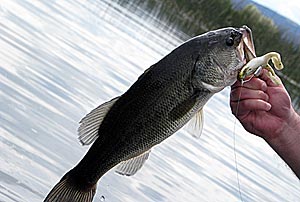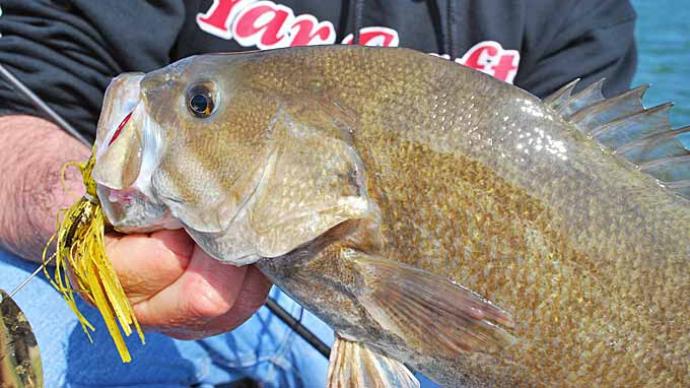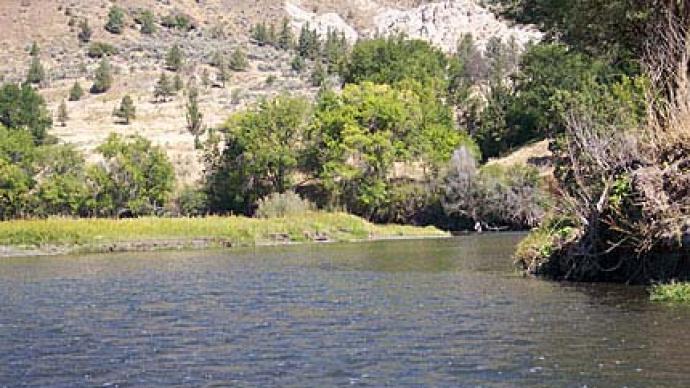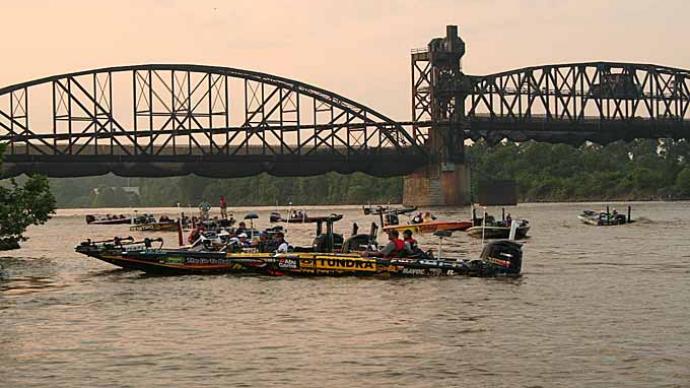
Summer structure fishing on the main lake can produce some awesome catches, but if you’re a shallow-water fisherman, you’ll find more bass in 6 feet or less in a river. Furthermore, those river bass probably will be easier to locate and a lot more aggressive.
Not all rivers are productive. I prefer rivers with dams because they tend to have more current. Current is what keeps bass shallow and makes river fishing so good.
Bass are more active in rivers with current for several reasons. First, current keeps oxygen levels high, something the fish don’t find in the main lake this time of year. Second, the water tends to be a little cooler.
But the main reason I like summer river fishing is because of how the current positions the fish. When the water is flowing, you can count on bass being behind objects (especially objects along the shoreline), and catching them becomes a matter of covering a lot of water.
The current will tell you what kind of day you’re going to have. If dam operators upstream aren’t moving water, the bass probably will suspend in the middle of the river and be difficult to catch. But if you notice water swirling around overhanging branches of shoreline bushes, you’re going to catch fish.
When fishing current, position your boat downstream from the targets so that your lures move with the current. The bass usually face into the current and are more likely to see and strike your lure if it’s presented with the natural water flow.
Before you head to a river with a lot of current, make sure you’ve got the power to handle it. Keeping your boat in position and moving constantly against the current requires a powerful electric motor and fully charged batteries. I use a 36-volt trolling motor that has 101 pounds of thrust with three deep-cycle batteries.
When choosing casting targets, look for anything that breaks the current or creates an eddy. That would include fallen trees, rockpiles, points, tiny cuts and bays or sandbars. Eddies typically are on the backside of current breaks and create a pool of dead water into which the current swirls. Bass will lie in those pockets and wait for an easy meal to wash into their faces.
Not all bass havens are along the bank; some eddies may occur offshore. During the summer months, you can find bass feeding in current breaks in the middle of a shallow river. And if the river contains smallmouth bass, they will hold behind rocks right in the current.
he same lures that work in the lake will work in the river. I like to pitch jigs and worms into heavy cover or work a spinnberbait through an eddy or along the backside of a log. Crankbaits are good choices for banging around rocks and logs, too.
You can pattern river bass the same as you do lake bass. Once you learn how the bass are positioned on the cover, key on those targets and keep moving. You rarely catch a lot of bass from one spot in a river, but you can catch an easy limit by hitting a lot of the same kinds of targets.
River fishing has another advantage: It’s free of rowdy boat traffic. That makes it a good choice for those weekends when you want a little solitude on your outing.
You can find more articles, quick tips and much more at HankParker.com.




